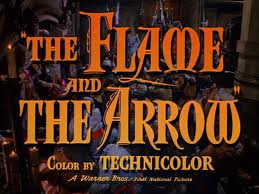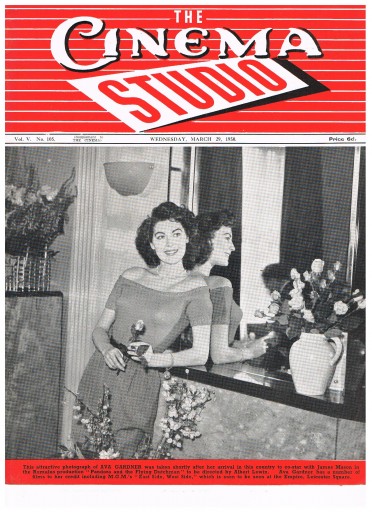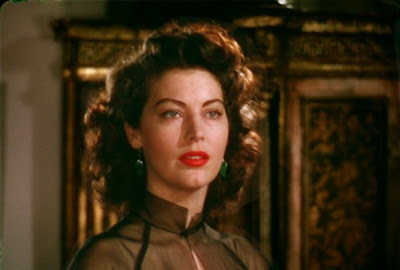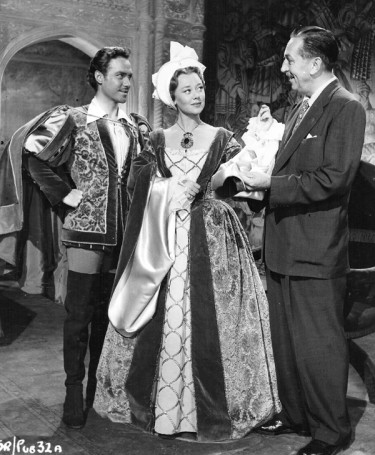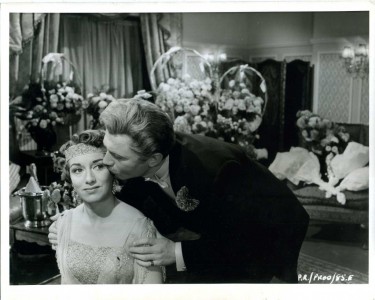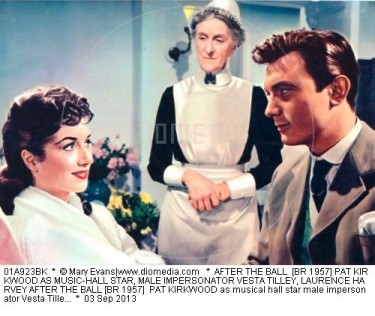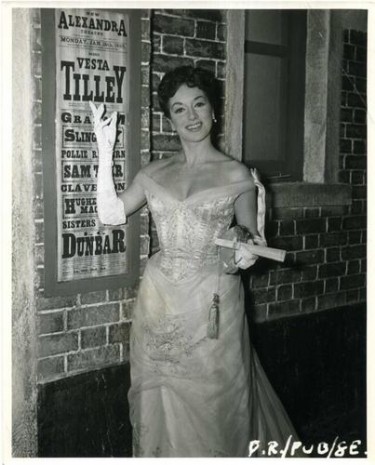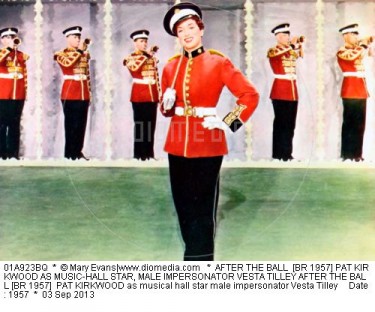“The Flame and the Arrow” takes the story of Robin Hood and transfers it from England to Italy. The scene is set in twelfth-century Lombardy, at a time when that area was subject to the rule of the Holy Roman Emperor Frederick Barbarossa. The villain of the piece is Count Ulrich the Hawk, the cruel German overlord of Lombardy. The Robin Hood figure is Dardo Bartoli, a hunter and skilled archer who leads a group of rebels against Ulrich after being outlawed, with the mute Piccolo the equivalent of Little John. There is also another villain, the Marchese Alessandro di Granazia, and a Maid Marian figure in Anne of Hesse, a beautiful German aristocrat who takes the side of the Italian rebels and falls in love with Dardo.
The film which obviously inspired this one was the Errol Flynn version of “The Adventures of Robin Hood”, made twelve years earlier. Burt Lancaster, who had previously been a gymnast and a circus acrobat, was an obvious choice to play Dardo, the sort of swashbuckling role which Flynn had made his own in the late thirties and forties. (Lancaster was to go on to play similar roles in other films such as “The Crimson Pirate”). Here, he gets plenty of opportunity to display his athletic talents, doing all his own stunts, many of which (such as the scene where he swings from the chandelier) were clearly inspired by “Robin Hood”.
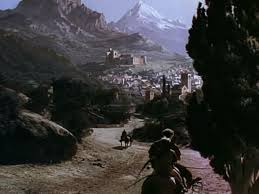
I absolutely love this matte shot at the opening of The Flame and the Arrow – above. Bottom half of the picture is live action and the top of the frame a wonderful colour painting – expertly joined together as one when on screen. Brilliant technique this and one that did so much for films.
Below link to The Trailer to The Flame and the Arrow
https://www.youtube.com/watch?v=l8mwYTfuNPs&feature=player_detailpage
Unlike Robin Hood, who is normally portrayed as a Saxon nobleman leading his people against their Norman oppressors, Dardo has a personal reason for resenting the German rulers of Lombardy. His wife Francesca has left him in order to become Count Ulrich’s mistress, and much of the plot concerns Dardo’s attempts to rescue his son Rudy, whom Ulrich has kidnapped.
